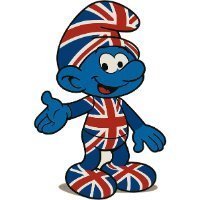Lanna Flag/ Coat Of Arms
-
Recently Browsing 0 members
- No registered users viewing this page.
-
Topics
-
-
Popular Contributors
-
-
Latest posts...
-
8
Booking for Hua Hin Immigration
prachuap khiri khan division 3 is not listed !! -
25
Middle East UN Confirms Famine in Gaza City, Condemns 'Man-Made Disaster'
There is no "the Hamas". There is a political party called Hamas. There is a para Army called Al Quassam. And there are Members, who distribute food together with International Aid-Organisations. And there is another political party called Fatah. All together they are Palestinians. I really don't know why I should give you extra lessons. Obviously you're not capable to learn. At least you should try reading. Start with Wikipedia. -
27
UK-Asylum crisis Nationwide Protests Expected as Tensions Escalate Across UK
OK. Understood, and thanks. -
169
Air Fryer
I discovered recently that eggs can be put directly in the air fryer and haven't used my steamer or boiled one since. -
46
Landlord didn't pay maintenance fee, now condo keycard locked
While I have sympathy for the renter, I applaud the Juristic for cracking down on delinquent owners. If a condo project has working, regularly serviced elevators, security and other staff on duty, a clean pool, working equipment in the gym, and other things, it is the result of responsible owners paying their maintenance fees. I liked the post suggesting the renter work with the juristic to pay part of his rent towards the delinquent fees and I would try that first. -
68
Immigration Thailand’s Immigration Bureau Revokes 10,000 Visas
[quote] ... $5000 a month but cant afford the 800k baht for an extension? ... [/quote] You misread my post. Of course I can afford the 800k 🙂 (I used to have an Elite visa). It's a case of "I have the money but I do not agree to place it in a Thai bank account". Basically, (and some might not understand my motives etc), I like to have as little as possible to do with officialdom, banks, paperwork etc. I'm not a criminal, I simply believe that there is not one government on this Earth that is not full of crooks, jobsworths and so on. I like to live my life my way, without providing photos, rental contracts and other such documents to anyone, unless I absolutely have to. I can think of no more enjoyable passtime than riding my offrode motorbike in the Lao hills, or swimming in a mountain stream in Shan State, without some official butting his/ner nose into my private life. Every country 'improves' over the years by introducing technology to catch scammers or to know who you are and where you are..... I don't like to be part of that 🙂 Many years ago I lived in Andorra, with its banking secrecy laws and I followed the 5-flags theory which stood me well for decades. As I grow older, I prefer to retreat from government 'spying', and Laos (yes communist Laos) and Burma suit me fine for that purpose.
-
-
Popular in The Pub



.thumb.jpg.3ee24d9400fb02605ea21bc13b1bf901.jpg)




Recommended Posts
Create an account or sign in to comment
You need to be a member in order to leave a comment
Create an account
Sign up for a new account in our community. It's easy!
Register a new accountSign in
Already have an account? Sign in here.
Sign In Now